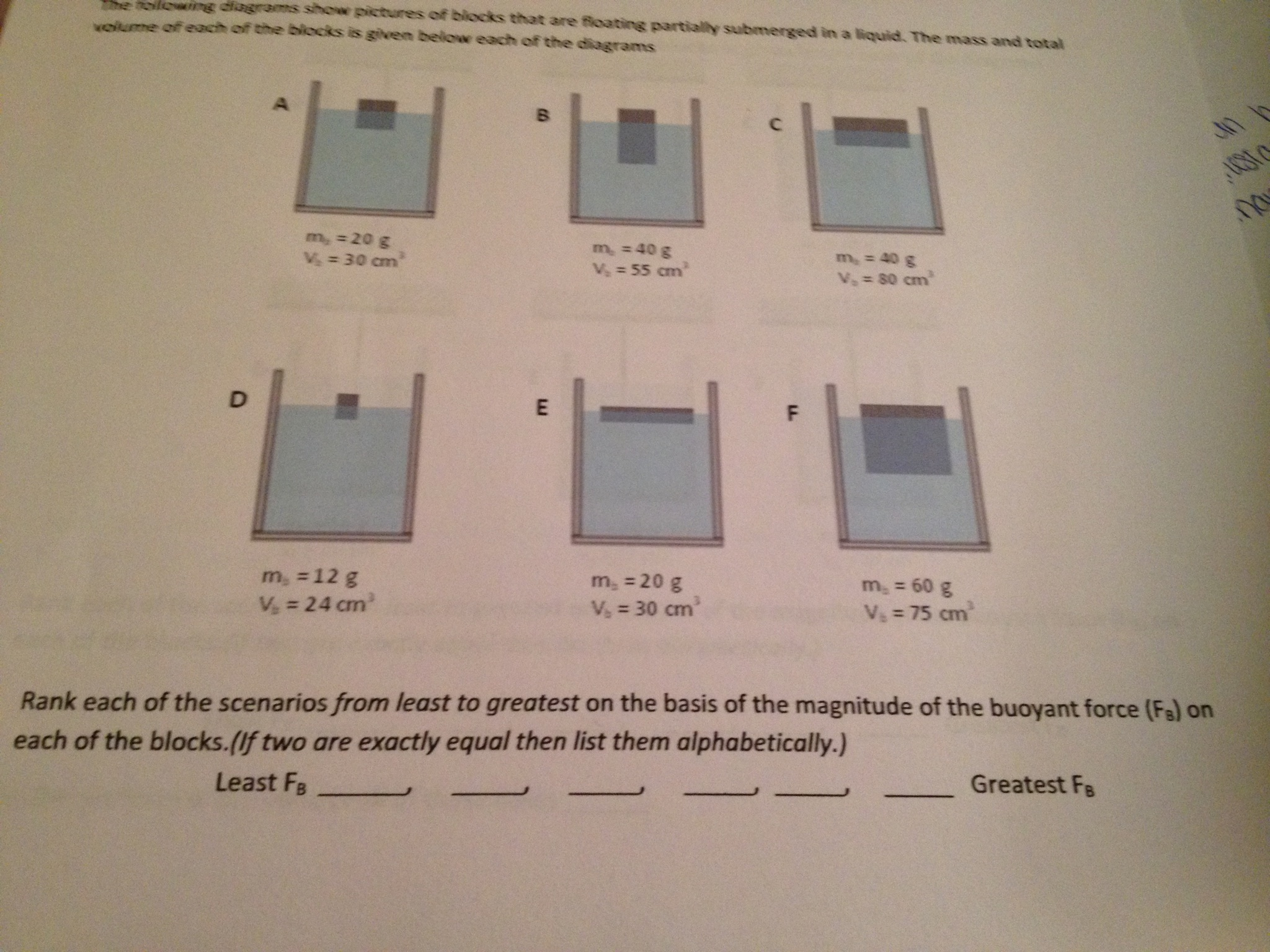
The buoyant force is the net upward force on any object in any fluid. Pressure due to the weight of a fluid increases with depth since P = hρg. This pressure and associated upward force on the bottom of the cylinder are greater than the downward force on the top of the cylinder. Video Transcript. Uh, why is it that the buoyant force on a submarine that submerged is a lot greater than when it's floating? And the reason for this is that when it's floating, less of its volume is, you know, under water. (a) An object submerged in a fluid experiences a buoyant force F B.If F B is greater than the weight of the object, the object will rise. If F B is less than the weight of the object, the object will sink. (b) If the object is removed, it is replaced by fluid having weight w fl.Since this weight is supported by surrounding fluid, the buoyant force must equal the weight of the fluid.

Buoyancy Uplift on footing
Buoyant Force Is Greatest On A Submerged Gas
- Greater than the buoyant force. – Neither sink nor float when weight of a submerged object is equal to buoyant force—object will remain at any level. – Float when weight of submerged object is less than the buoyant force it would have when submerged—when floating, buoyant force = weight of floating object. © 2015 Pearson Education, Inc.
- Water pressure is greatest against the. The top of a submerged object.
Buoyancy Uplift on footing
If A Loaf Of Bread Is Compressed Its
For example, If I have a pedestal wall footing, say 2'-0' deep, pedestal wall 8'-0' (10'-0) total, and the water level is at the top of the wall, Am I safe to say I can reduce the bearing pressure on the soil by 62.4*10'-0', or that value is the uplift buoyancy force?
I have this comment from a geotech, I am trying to understand it a bit more
Even if it is assumed that the groundwater level is the same on both sides of the structures (equalized via weep holes), buoyancy and uplift will significantly impact stability. The earth pressures for portions of the backfill soil below the ground water level should be based on effective stress, using submerged unit weights. The weights of soil and concrete below the ground water level should be estimated using submerged unit weights, or, as an alternative, hydrostatic uplift force on the bottoms of the footing should be included.
It seems that he is saying either add the water fluid pressure behind as a lateral force, or the hydrostatic uplift force.
Any comments?